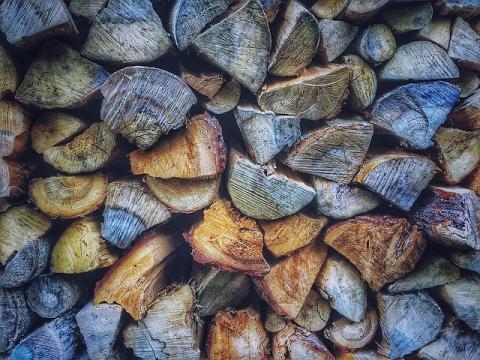How can I tell if my firewood is seasoned and okay to burn?

Wood burned inside the home should always be dry and seasoned for at least 6-12 months. Wood burns most efficiently when the moisture content is at 20% or less. Damp wood burns at a cooler temperature, resulting in incomplete combustion, more smoke, and dangerous creosote build-up in the chimney (a fire hazard). Excess wood smoke can decrease air quality both inside and outside the home, contributing to breathing issues. In short, avoid burning unseasoned wood!
It can be difficult to tell if firewood has been seasoned by sight alone. Deep radial cracks at the ends of split logs are one indicator of dryness. Seasoned firewood will also be lighter weight than green wood, although judging this can be subjective. You can also try banging two pieces of wood together, paying attention to resonance. Dry wood will “ring” on impact, while wet wood will only thud. Perhaps the best and most reliable way to test firewood is with a wood moisture meter. Wood moisture meters can be found at most hardware stores or online. To test your firewood, split a log and stick the meter’s prongs into the wood on the freshly split side. For accuracy, test several pieces of firewood from different places in the woodpile. If the moisture content is below 20% it will burn cleanly and efficiently.
In the future, eliminate all guesswork by seasoning your firewood yourself, by stacking it in a dry, well ventilated place.
This was your Question of the Week. Got questions? The Ask UNH Extension Infoline offers practical help finding answers for your home, yard, and garden questions. Call toll free at 1-877-398-4769, Monday to Friday, 9 a.m. to 2 p.m., or e-mail us at answers@unh.edu.